
 EQUIPMENT The vast
majority of photos exhibited on this site were taken using a Canon EOS
1D Mark III camera—a 10-megapixel professional
DSLR. I have two of these cameras, and always go into the field
with both of them, one attached to a high-power, tripod-mounted lens,
and the other attached to a lower-power flight lens which I sling over
my shoulder and use hand-held (i.e., without any tripod).
 The photo below shows my
usual setup in action. The large lens is a 600mm f/4 lens with a
1.4x teleconverter attached, resulting in an effective focal length of
840mm. This lens is very heavy and is almost always mounted on a
tripod, though in extreme circumstances I will detach it from the
tripod and use it hand-held.
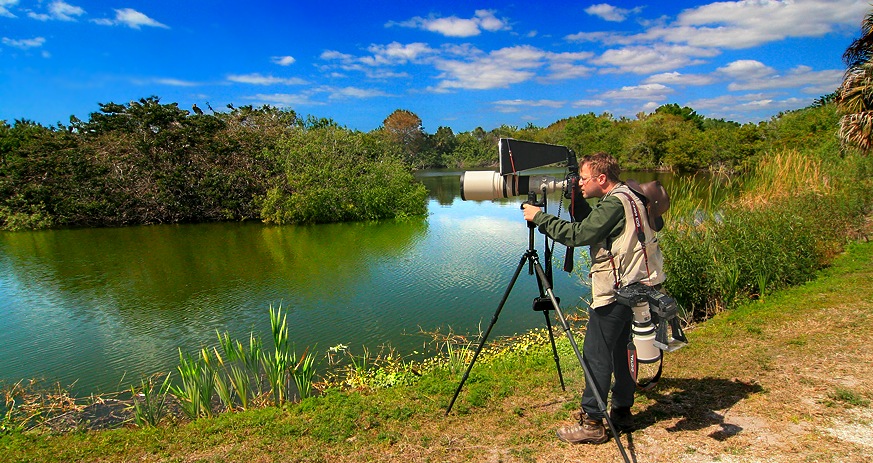 The black trapezoid-shaped
box you see mounted above the lens in the above photo is a homemade
fresnel flash extender, which both magnifies the light from my flash
(by concentrating it into a narrower cone) and increases the effective
reach of the flash. The above photo also shows my flight rig
slung over my shoulder. This rig incorporates a second EOS 1D
Mark III camera and a 400mm f/4 lens. The Canon 400mm f/4 DO lens
is, in my opinion, nearly the perfect lens for photographing birds in
flight, because it is lightweight, relatively compact, bright (f/4),
and extremely sharp (fully as sharp as my Canon EF 600mm f/4L
lens). This remarkable 400mm lens is shown below attached to an
older camera:
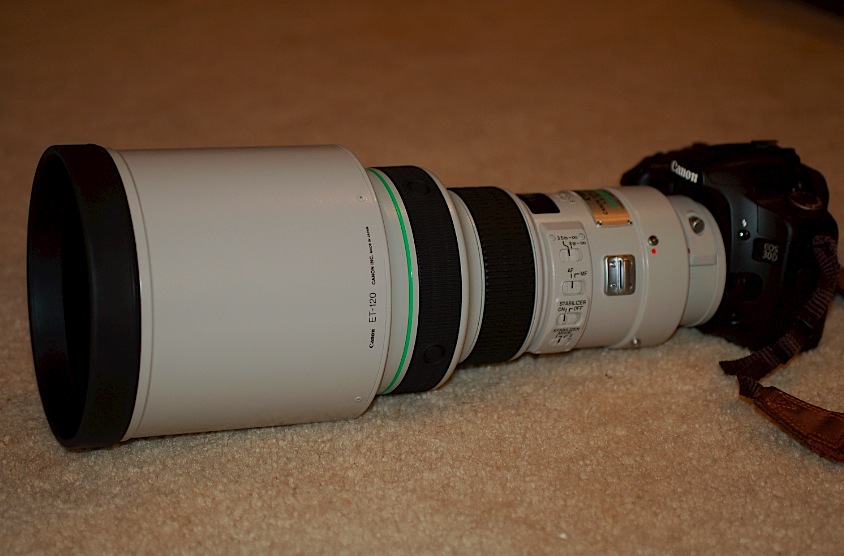 Both of my main lenses
feature image stabilization.
This feature can be very useful in some circumstances (even when using
a tripod), though in bright light or for flight shots it's often
unnecessary. Although the IS (image stabilization) has a panning mode that should in theory
be useful for flight shots, I simply turn IS off whenever the bird I'm
tracking is in constant motion. When light is plentiful and I can
use high shutter speeds, IS really isn't needed at all, and in fact it
can slow down the autofocus acquisition speed for restless birds like
warblers.
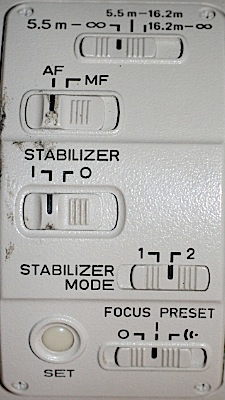 Teleconverters are a very
important part of my lens lineup. I use a 1.4x teleconverter more
than 50% of the time that I'm in the field, both with my big 600mm lens
and my smaller 400mm flight lens. The 2x teleconverter I only use
when extreme focal lengths are required. Canon's teleconverters
are of extremely high quality, though they're expensive and brand-new
units are sometimes defective, so they need to be rigorously tested in
the field.
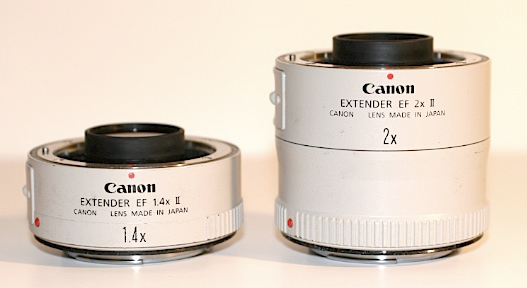 I've also made extensive
use of extension tubes (see
below) in the past, though more recently I've rarely used them at
all. Extension tubes reduce the minimum focus distance of your
lens. My bigger lens can't focus on any bird that comes closer
than 18 feet, while my smaller lens can't focus closer than about 11
feet. Using an extension tube can sometimes reduce the minimum
focus distance dramatically, and this can be useful for small birds
that allow a close approach. The disadvantage is that with the
extension tube attached, you can't focus at infinity (i.e., at longer
distances). Also, sometimes an extension tube will cause the
camera to focus incorrectly.
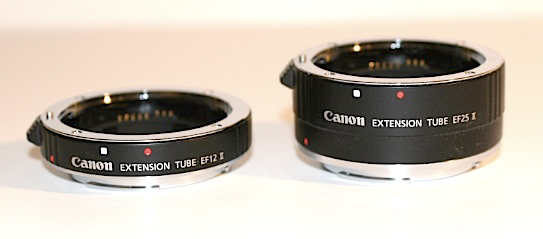 In addition to the camera
a lens, an extremely important piece of equipment for photographing
birds is the flash unit. The advantages of flash are numerous: it
allows a faster shutter speed, which can better freeze motion and
thereby produce sharper images; it results in richer, more natural
colors; it lightens up shadow regions of the bird, thereby reducing
noise and increasing apparent detail in poorly-lit areas; finally, it
creates an impression of extremely fine detail, via the phenomenon of micro-contrast, whereby microscopic
features of bird feathers that are parallel to the imaging plane are
rendered in exaggerated contrast to adjacent surfaces.
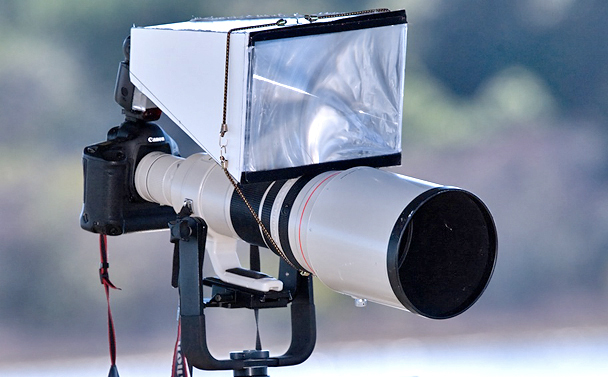 Unfortunately, flash
photography requires a lot of battery power. I keep a bag of
several dozen AA batteries with me at all times in the field.
When on long trips away from home, re-charging all these batteries each
night in my hotel room can be a challenge, given the limited number of
power outlets available in many downscale hotels. I solve this
problem by using the PowerSentry Squid, or what I like to call the
Squidmonster:
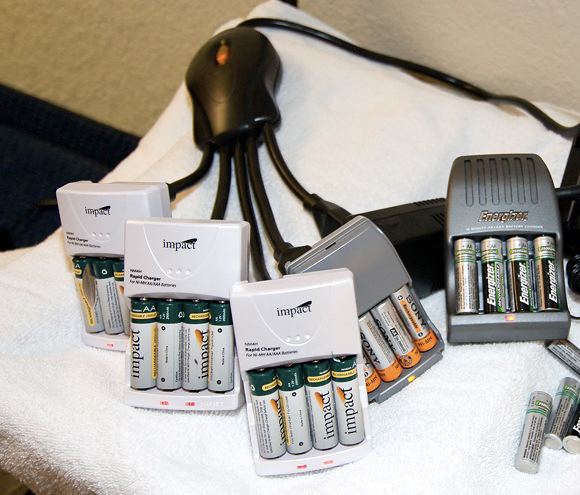 The squidmonster allows me
to connect five battery chargers simultaneously, using only a single
wall outlet. For batteries, I currently rely mostly on
Energizers, though Eneloops have become a popular alternative for
various reasons. The Energizer charger that I use can charge four
AA's in 15 minutes, though I and others have found that after a few
months it begins to reject batteries, either because they've become
damaged, or because the charger has become finicky (I'm not sure which).
For memory cards, I use compact flash cards. My camera has twin card slots (one compact flash and one secure digital), but I currently use only one. The compact flash cards simply feel more durable to me, though I do like the write-protect feature of the SD cards. I always go into the field with eight 8GB cards, and have never run out of memory. If I ever upgrade to a higher megapixel camera, however, I'd probably also upgrade to larger capacity cards. 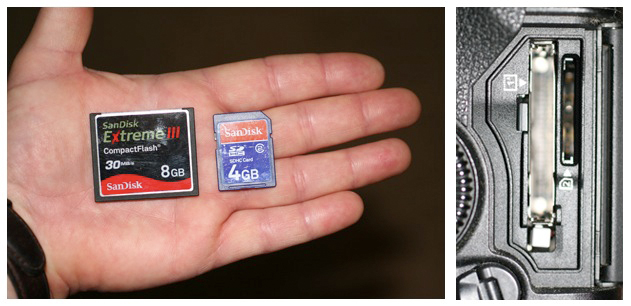 Regarding the brand and speed of the cards, I've found very little advantage to buying the more expensive cards. I came across a great deal on 8GB cards from TRANSCEND on Amazon.com, and bought a bunch of them. They've never failed me yet. In fact, the only cards that ever failed me were the ultra-expensive LEXAR cards that I bought for my older cameras. I did, however, buy two Sandisk Extreme III cards to use when shooting high-frame-rate sequences of birds in flight, since my camera's buffer tends to fill up quickly when shooting in RAW (as I always do). But for most purposes I use the cheap TRANSCEND cards that cost me about $20 each. For more information on equipment for bird photography, please see my free, online book:  |